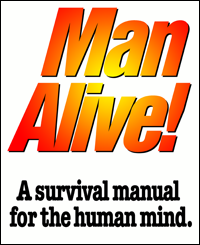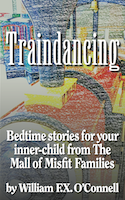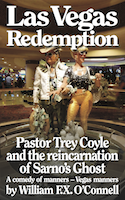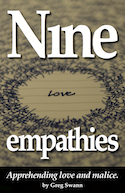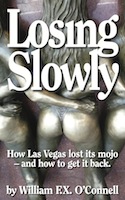
This is not what my train looks like – unless you’re a toddler.Photo by: Tejvan Pettinger
Sunday, May 8, 2016 – Mother’s Day
I want to tell you another train story, but this is a sad one – a little girl’s discovery of evil. I haven’t known what to do about sad train stories, to say the truth, but the sad truth is, they’re there. There are no monsters at the mall, or none that I’ve met, but still there is tragedy – the kind that lasts a lifetime.
So this is a tragedy about religion and silent cinema.
Every story I have to tell about my time driving the choo-choo train at the mall is a story about religion, ultimately, because the train itself is the first idol in the lives of the children who idolize it.
And a whole lot of train stories are silent cinema because, in the din of the mall, with the clamor of the train, if we’re not standing face to face or speaking mouth to ear, there is no point in anyone talking. To drive the train is to communicate by signalling – by hand gestures and facial expressions.
And I see your part of the story whether or not you’re aware of me, and I see more than most people do in the first place, and I see the same silent movies over and over again – different players, same scenes. And that makes it easy to spot the things I’ve never seen before.
So: A taxonomy: Infants, babies, toddlers, children. Infants bawl and sleep. Babies bubble and coo. Toddlers babble in words used as signals. Children converse – in abstract conceptual language. Infants, babies and toddlers are mammals graduating into their potential humanity. Children are short, inexperienced human beings.
To infants, the train is a loud distraction, at best, and a reliable nap-disturber. To babies, it is the wondrous other, vast and thrilling and incomprehensible. My choo-choo is a benevolent dragon to toddlers, a true super-hero, a great and powerful presence who is nevertheless perfectly reliable – unlike, perhaps, some other could-be-heroes in the kid’s life – a benevolent dragon who can be petitioned to do astounding things.
To those toddlers, and to the children they grow into, my little Lego-block-colored train is their first experience of worship, of divination, of propitiation and palliation – of religion. You think you’re taking your kids off to have some fun at the mall, and you never for a minute suspect that each one of them is coming home with his own personal, private, independently-abstracted cargo cult.
You think I’m joking, but I’m not. This is what’s happening. I see it dozens of times a day – the phases and expressions of the cult of the train – almost all of it as silent cinema.
So the little girl’s name is Emily Brownbangs, and that’s her name because I don’t know her real name – not so far, at least. She’s Emily because she’s short and sweet and has the most heart-melting smile, and she’s Emily Brownbangs because she has straight, shiny, shoulder-length brown hair with straight, shiny brown bangs.
I saw her for the first time early in the day on Mother’s Day Sunday. She was standing in the first corner of the playground, which is typically a spot for younger kids to shale the train from a distance.
Shaling is a word I made up. I named it after a cat of ours – Shale – who turned a commode into her actual throne, the seat of her elaborate cargo cult in and of our guest bathroom.
Looked at as behavior subject to observation, to shale is to window-shop obsessively, and the most aggressive shaling of the train consists of fondling it when it’s parked back at the station. Toddlers will toddle over to inspect and then touch the train. Tentatively and fearfully at first. It’s a benevolent dragon, but it’s still a dragon, after all. But, then, in time, they will caress the lacquered coaches with a loving devotion, the way dad might lovingly caress a sports car – or lovingly caress mom, for that matter!
Shaling is yearning, a wanting that doesn’t stop, but shaling is a way of working to satisfy or at least palliate that desire, too. In the imagination of the kid – or of anyone – the shaling behavior will somehow result in the realization of the dream.
And: Bingo, bango, bongo: The cargo cults I promised you emerge, each one unique to the cultist.
I’m talking about the kids at the mall, but I’m talking about their parents, too. I’m talking about you and me and everyone: We all do this – whether it’s shiny ladies hob-nobbing over snobby baubles or their lonely husbands lingering over the catalogs of virtual companionship online.
Whatever it is, cats or cameras or bison or boats, if you want it badly enough, you’ll work to get it – ideally in a way that can actually work. But between the wanting and the getting is the shaling, and it’s the shaling that keeps you working. We’re all of us chasing a dream – all the time – and that is what makes horse races.
But the essence of shaling is right there to see: Shaling is the propitiation of the god of a cargo cult. The god is what you want. The propitiation is what you’re doing to get it. And the shaling is the wishing and hoping and planning and anticipating that drive your mind to drive all that effort.
So for Emily Brownbangs on Mother’s Day Sunday, shaling the train began by simply bespying it from a safe distance. I’d put her at around three-and-a-half, an older toddler, but I don’t recall ever seeing her before. My guess from the fear-tinged wonder in her eyes was that little Emily had never seen my train before, either, or at least never really taken it in.
But she stayed with me through all three laps of that first trip, gradually working her way along the side wall of the playground, up toward the second corner.
And the indoor playground at the Arrowhead Towne Center Mall is where I dance. The train sells crazy to crazy, and nothing sells the train like the train, so my big marketing innovation, when I became the loco engineer, was this simple notion: If you drive the train around the crazy, the crazy will come to fill the train for the next trip. If that sounds like shaling to you, it’s because it is. If it sounds like it works like a charm, that’s because it does.
Anyway, the playground is like a giant living room sectional composed of high-backed sofas – only, you know, commercial-grade and tuff-vinyl-clad. Within its confines are big plastic sculptures that are reputed to resemble real things – plausibly gaudily-painted fake rocks – that children hide under, climb on and jump off of.
But the action for me is always always along the high-backed walls. Tiny toddlers will shale the train from the middle of the playground, but that’s just because they’re not tall enough and nimble enough to scale the seat and jump up to see the train in time. But the bigger toddlers and the children do just that, usually distributed by age along the walls of the playground.
There will be grown-ups sitting along the wall – using the seats as seats, oddly enough – but there will also be grown-ups exposing their babies and young toddlers to the train, holding them up to see the choo-choo, and holding their little hands, coercively teaching them how to wave at me and my passengers.
Yes: You had to be taught how to wave.
You were born knowing how to smile and how to grimace – and how to interpret the universal language of human facial expressions and bodily displays. I call this language Mothertongue. It’s how you actually talk to toddlers. You think it’s the words doing the heavy lifting, but it’s not. It is your visible emotional commitment to your position and your so-far unblemished track record for fairness that are swinging the deal, with the words, at least early on, looking a lot like ribbons and bows to your kid.
But hand-signaling, beginning with the simplest wave, is a learned language – Fathertongue – and your knowledge of it had be be cultivated, husbanded, fathered into existence.
Emily was watching from the second corner on the first lap of my second trip of that day. That was the right place for her to be, a place where bigger toddlers converge, and where I look to start my own hand-signalling game.
I signal to the toddlers and the children as I make my laps around the playground: Thumb’s Up for the first lap, V-for-Victory for the second, and the ‘OK’ sign for the third.
What am I doing? I’m counting laps, so I don’t do too few or too many. I’m deploying the children as my notation system by making a game of my own random distractibility. I’m engaging them, too, befriending them but also always selling them on the train. Meanwhile, I’m also joining them in more elaborate shaling behaviors as we go along – and as children grow up seeing the train.
What do the children see in my signalling? Young toddlers think it’s just another kind of waving. Older ones think it’s a guessing game, like Rock-Paper-Scissors-For-Thumb-Suckers. Children recognize and mimic the pattern, and they know by now to look for patterns. But I’ve never yet had a child fail to be surprised and delighted when I reveal the underlying abstract purpose of the signalling – simply counting.
Emily was seeing my hand-signals for the first time on that lap, but I almost always have ongoing followers in the cult of signalling, so new initiates like Emily learn from the adepts. For the second lap, she made the Thumb’s Up sign, quickly seeing her error and correcting it, to form the V-for-Victory gesture. She had studied up by the third lap, making the ‘OK’ sign, but making the circle with her thumb and pinkie instead of her thumb and index finger.
But she studied the other children shaling the train from then on, getting better and better at flashing the signals as the train made its rounds and advancing though the levels of the cult.
So in due course she was running The Stations of the Train, racing from corner to corner within the playground to greet the train as it gets to that point. It obviously does not occur to toddlers to be first amazed and then amused that they are so easily able to outrun the train. Instead, they are beyond delighted to meet the choo-choo again and again, usually with signal flashing, often with jumping, giggling and shouting. When there are enough toddlers around, and few adults taking up the seats, the whole third corner of the playground can become a permanent floating revival meeting.
I was busy-but-not-too-busy, driving fairly constantly, and Emily was there with me through every lap of every trip, running the Stations and flashing the signals. Eventually, her shaling became perfunctory, with her racing ahead and signalling without really looking at the train, then racing ahead to signal again – looking like nothing so much as a frazzled Catholic rushing out of an early morning Mass to race off to work.
Her propitiation wasn’t working. Her god was failing her.
I saw her work on her mother a few times, but that seemed to get her nowhere. It’s what I would expect, to say the sad truth. They were at the mall early and for a long time on Mother’s Day. No brunch for mom, so no dad at home for Emily – with mom’s own mother being either distant, deceased or estranged. Dads and grandparents will spring for the train, and I shale them in my cloying ways even as the kiddies execute their own propitiations. Married moms will pop for a ride, too, as the reward for good behavior. Single moms? Not so much.
Am I right about all of this? About any of it? Remember, I’ve spoken to no one. I don’t even know Emily’s real name. But I like the odds of my inferences about the silent movies I see every day from the train, so if you like to bet, I like to win.
Don’t bet on this story, though, because I already know how it ends.
So: There came a trip, as there always does, when she wasn’t there any longer. This is my sad fate, every day – to make fast friends with adorable kids who then disappear on me without notice. They’re in the playground because their grown-ups are killing time or because they are indulging them by stopwatch. Sometimes we get to say our goodbyes when the kids are being strapped back into their strollers, but most of the time they’re just gone – off to the Disney store or the Build-A-Bear emporium or to one of the many nearby stores offering slutty fashions for chunky teenagers of all ages.
But then she was there again, as I pulled out of the station for the next trip, not in the playground but on the cheesy sports car ride sitting astride the corridor – a grocery-store-parking-lot kind of attraction, except I doubt it could withstand the weather. It’s broken most of the time, even indoors. Many parents don’t even bother to put money in it, anyway. They just stuff the kid in the car, sometimes shaking it from the bumpers. Whee!
But, paid for or not, the car is a step down in price from the train, and I totally get it. My ride is much cooler – but much costlier. The big trade-down for kids isn’t the car, on one side of the elevator from the train station, it’s the glass-bubbled candy-machine stand on the other side. Grown-ups shale their kids away from train-frenzy with a quarter’s worth of sweet palliation, training their children that food is a trusty bridge between disappointments. They can’t say “no” and make it stick – so they make it sticky instead.
But that wasn’t Emily’s deal, or not all of it, and I saw the rest of the story in three quick glances of silent cinema.
That’s funny to me, but, of course, so is everything else. If there were a movie trailer for any Willie story, this would be the stentorianly baritoned announcer’s script: “In a Ramblin’ Gamblin’ Willie story: When nothing happens – everything changes. Forever.”
So Emily Brownbangs looked up from the car to see me coming at her in the train. She was surprised and delighted, at first – the train! – but then her delight turned to wonder then to doubt then to anger and then she herself turned to glare at her mother with a gathering storm of resentment:
You lied to me!
No words, just Mothertongue: You lied to me!
Mom had told Emily the train was broken or I was on break or some other facile lie I will hear, sometimes, as parents try to sneak past the train. They will even try to induct me into the lie, but then they end up looking daggers at me, because I won’t lie for anyone.
But this is what you get when you lie to your kid – about anything: You get a liar as your offspring. You just traded away every bit of trust your child had in you by proving yourself unworthy of it – and you may have traded away the kid’s trust in anyone, everyone, forever. You licensed deceit – made it good for the kinder, a better way to shale – and trivial deceit at that. And you planted a seed that will one day come home as a great big lie – that you will claim took you totally by surprise.
Emily’s mother couldn’t say “no” and make it stick. She couldn’t just say, “Not today, honey,” or “Maybe next time.” Instead she told her daughter a bald-faced, obvious lie – the kind of lie that could only work on a pre-conceptual toddler, never on a wide-awake child – and it was in that moment that Emily Brownbangs graduated into her childhood, blossoming into a fully-conceptually-aware – fully-self-aware – human being.
She shot me that third glance in our three-second silent movie: I knew it!
She knew she had been lied to, but maybe she had suspected for a while that her mother is a liar. Maybe she suspects that about everyone around her – or maybe she does by now.
But that’s why this story is a tragedy: When Emily Brownbangs woke up as a human being, she woke up to tragedy. She woke up to guile. She woke up to betrayal – not just the betrayal of her and of her beatific yearning for the train but the betrayal of the tapestry of trust she and her mother had been weaving between them since Emily was conceived – and the betrayal, ultimately, of the idea of trust itself. We each one of us will in due course discover flaws in our parents, but that shouldn’t be the first thing we know about them.
But whether we wake up to guile or to wonder or to awe or to a boisterously comical surprise, when we graduate from toddler to child, each one of us wakes up alone. And so it seems plausible to me that adorable little Emily Brownbangs learned in that moment a lesson that each one of us masters eventually: The one thing in this world you can always change is your attitude. You can’t always depend on other people, but you don’t need to, anyway, because you can always depend on yourself.
What makes me think that? You can’t always love the train from the inside, but you can always love it with your eyes. And you can always propitiate whatever it is you want by whatever denomination of shaling seems most propitious to you at the time. And that ‘I knew it!’ look on Emily’s face – scrunched up at the eyes but smirking at the mouth – that look melted away, to be replaced by pure adoration:
The train!


